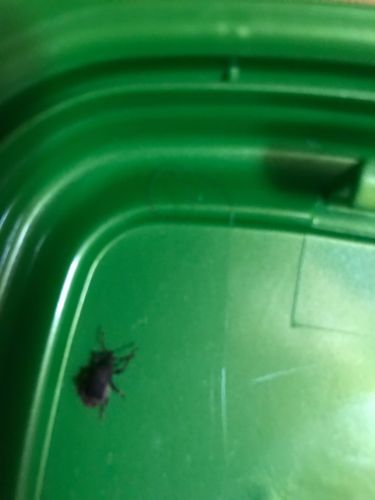Plum Curculio (Likely)
Scientific Name: Conotrachelus nenuphar (Likely)
Order & Family: Order: Coleoptera, Family: Curculionidae
Size: (4-6 mm) long

Natural Habitat
Orchards, fruit trees (apple, peach, cherry, plum, pear, etc.), and wild hosts where stone and pome fruits are grown.
Diet & Feeding
Adult plum curculios feed on the skin and pulp of developing fruits. The larvae feed on the pulp and seeds inside the fruit.
Behavior Patterns
Plum curculios are known for their destructive feeding and egg-laying habits on fruits. Adult plum curculios typically emerge in spring, often coinciding with fruit tree bloom. They feed on young fruits, laying eggs in crescent-shaped cuts they make. The larvae then bore into the fruit, feeding on the pulp and often causing the fruit to drop prematurely. They overwinter in the duff layer or soil beneath host trees and emerge in the spring.
Risks & Benefits
Risks: The primary risk of plum curculios is significant damage to fruit crops, leading to economic losses for growers. Larval feeding causes fruit drop, deformities, and makes the fruit unmarketable. Benefits: There are no significant known benefits of plum curculios.
Identified on: 9/3/2025